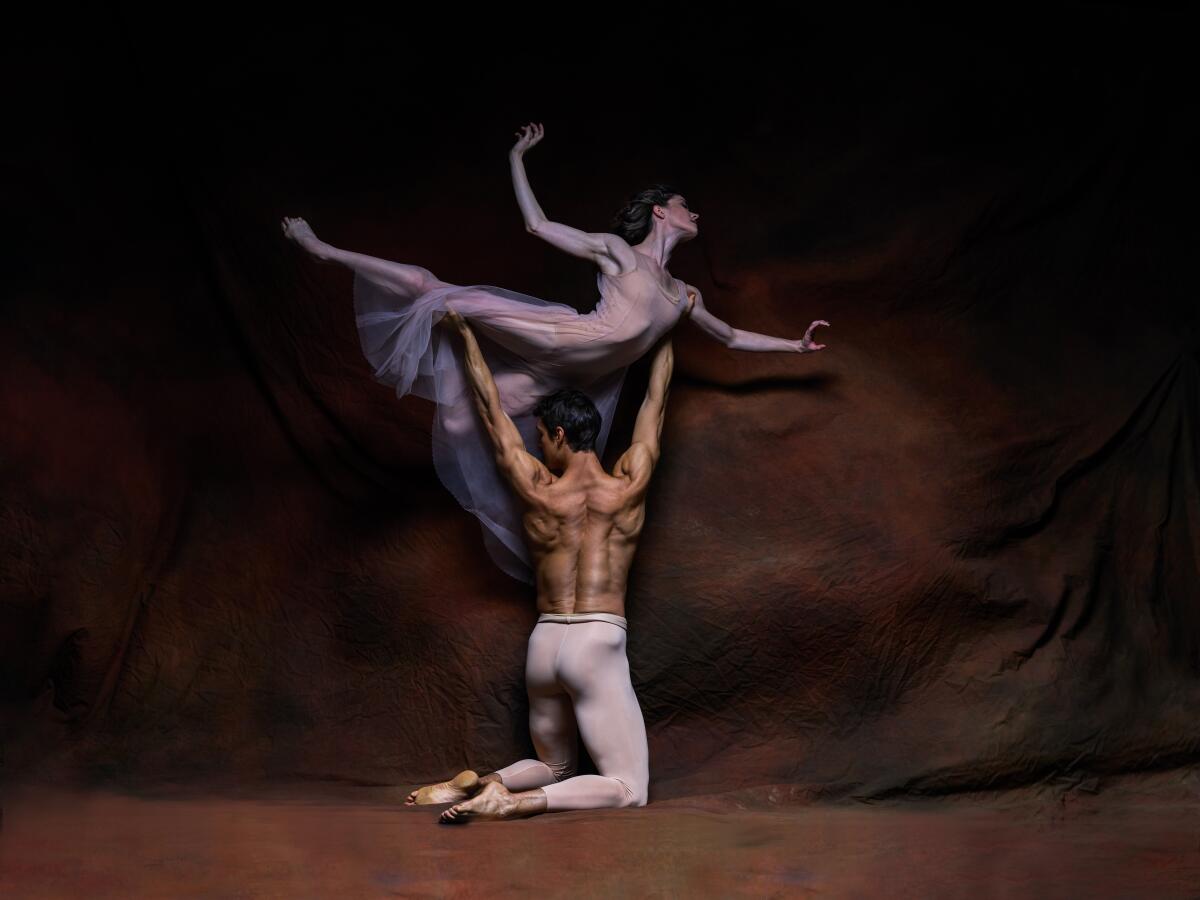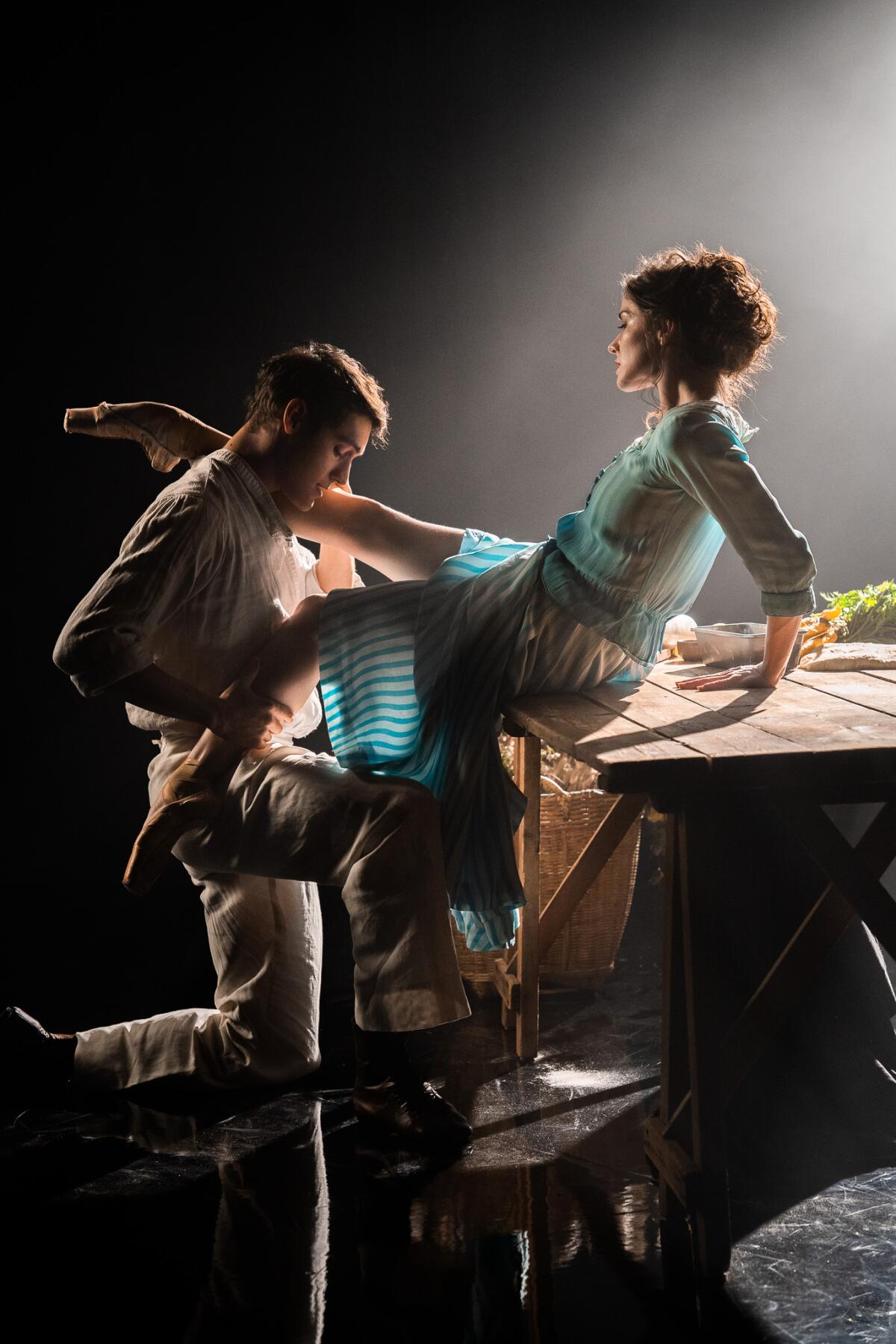American Ballet Theatre’s ‘Like Water for Chocolate’ makes magic

- Share via
Traditional cooking can make a feast. Traditional dance can make a ballet. Melding the two together can make magic.
On March 29, the Segerstrom Center for the Arts will present the North American premiere of Christopher Wheeldon’s latest ballet, “Like Water for Chocolate,” from American Ballet Theatre. Running through April 2, the show comes straight from its world premiere at the Royal Opera House in London to Costa Mesa, before heading to the Metropolitan Opera House at New York’s Lincoln Center for the summer season.
Named for the novel by Laura Esquivel of the same name, the ballet tells a story set in 19th-century Mexico of Tita, a woman forbidden from marrying her wealthy neighbor Pedro because of a family tradition requiring the youngest daughter to care for her mother until her death. Tita pours her emotions into her cooking, resulting in food that is capable of mystical powers.
The novel, which begins each chapter with a recipe, has sold more than 4.5 million copies around the world and has been translated into more than 30 languages. It was adapted into a film in 1992, and now Wheeldon, working closely with Esquivel, has shaped her story of magical realism into a ballet.

“Having Christopher and his team transform my story into a ballet is truly magical for me,” Esquivel said in a statement. “I can’t wait to see this wonderful creative adventure unfold.”
The show includes a newly commissioned score by Joby Talbot, with designs by Bob Crowley. Mexican conductor Alondra de la Parra will lead Pacific Symphony.
The show’s artistic director, Susan Jaffe, said the novel is not only honored in this adaptation but enhanced.
“It really follows the novel so beautifully,” Jaffe said. “It is really told like a story, almost cinematically so.”
Jaffe notes that often in classical ballet, a scene will pause and then a pas de deux will follow.
“In classical ballet, everything stops and then they do a big pas de deux, and then they applaud,” said Jaffe, “and then it’s, variation, variation, coda. That is not this. This is all of one thread, going from one scene to the next.”
Jaffe said strong acting also sets this show apart.
“There are wonderful roles for our amazing dancers to sink their teeth into,” said Jaffe.
Self-guided Amazing Places of the Canyons Tour on April 1 invites guests to explore six sites at Modjeska, Silverado and Trabuco canyons.
The acting is so well done, Jaffe said, that despite working closely with the show she often finds herself in awe of the performance.
“Even when I am sitting in the studio, and I know all of these things and how they have been rehearsed, I even get very moved while I am watching these scenes,” Jaffe said. “I am moved very deeply by it.”
Dance has a way of taking great stories and making them greater.
“Ballet has done that through the millennium,” said Jaffe. “‘Romeo and Juliet’ … ‘Taming of the Shrew,’ there so many stories that were originally Shakespeare or another storyteller.”
Segerstrom Center for the Arts is highlighting that tie to literature by hosting a book discussion series in conjunction with the ballet, as part of a partnership with the Orange County Public Library. Curated chapter readings are intended to bring awareness to the novel and the ballet. Attendees to the event also receive copies of Esquivel’s book. So far, the series has included an interactive event with Orange County Poet Laureate Natalie J. Graham at Cypress Library. Author Marytza K. Rubio will lead the next book discussion on March 23 at San Juan Capistrano Library.
Jaffe recommends reading the book or at least a summary beforehand to truly comprehend the show.
“It is very dense, and there are a lot of characters in it,” said Jaffe, “but if you know who they are, you will be able to watch this story as if you are reading the book.”
Although using dance as a vehicle for storytelling isn’t a new kind of magic, when it is done properly, it can be hard not fall under its spell.
“It is a glorious representation of today’s standards, today’s storytelling,” said Jaffe.
All the latest on Orange County from Orange County.
Get our free TimesOC newsletter.
You may occasionally receive promotional content from the Daily Pilot.







